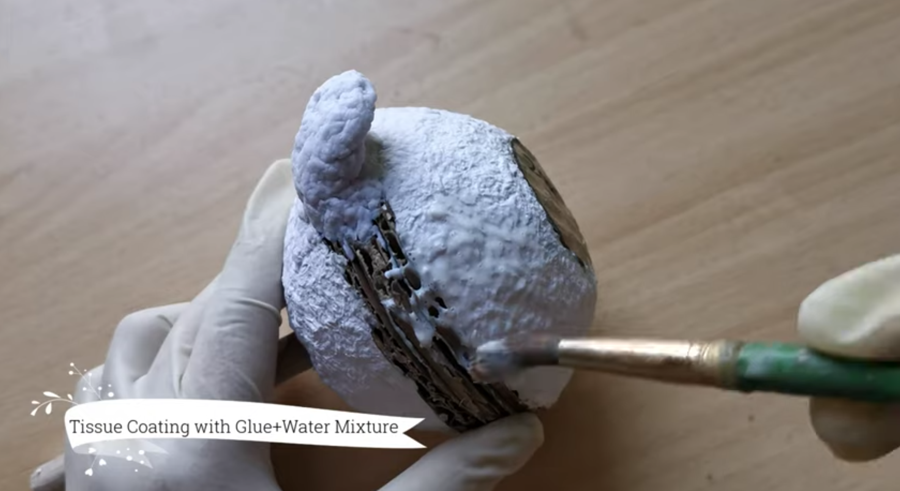With cardboard, paper and tissue, each soaked in water and glue, and some paint, Pakistan-based YouTuber and self-taught science crafter Khadija Fazal Karim creates an anatomical model of an eyeball. Her YouTube channel, BioMedical Art, specializes in making handcrafted learning tools, demonstrations for biology teachers and students.

A series of cardboard circles are measured with a compass and cut. When glued together, the different sizes form the sphere. A cardboard cylinder represents the optic nerve. Then paper maché, made with a 50/50 mix of craft glue and water, creates a paste that binds paper into a shapable material. Tissue seals the form with a thin outer shell and, when dry, the iris and pupil are painted.

Paper maché-covered cardboard triangles make the eye’s four recti muscles: superior rectus, inferior rectus, medial rectus and lateral rectus. She also adds the lacrimal gland. From Medline Plus:
“The lacrimal gland is located within the orbit above the lateral end of the eye. It continually releases fluid which cleanses and protects the eye’s surface as it lubricates and moistens it. These lacrimal secretions are commonly known as tears.”
Red puffy paint (or thin yet dimensional lines of paint) create retinal blood vessels, and a clear circle of plastic adds a shiny cornea to the model.

Find BioMedical Art on Instagram and YouTube.
Watch these related eye videos next:
• How do eyes work & how do glasses help us see?
• How do your eyes perceive color?
• How do our eyes and brains work together?
• Close ups of the human eye
• Fred Harwin hand paints highly detailed prosthetic eyes
Curated, kid-friendly, independently-published. Support this mission by becoming a sustaining member today.

